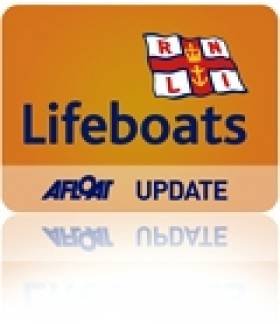Displaying items by tag: David Roultson
Portrush RNLI Lifeboat to be Named
Portrush RNLI Lifeboat 'David Roultson' will be named next Saturday, April 16th. The D class lifeboat will be named at a ceremony at Portrush Lifeboat Station at 2pm.
The lifeboat has been funded through a generous contribution from the Civil Service Lifeboat Fund and will be officially named by Sir Peter Housden KCB, Chairman of the Lifeboat Fund and Permanent Secretary of the Scottish Government.
Also on Saturday a special plaque will be unveiled at the station by Mr Alan Clarke, Chief Executive of the Northern Ireland Tourist Board in memory of David Roulston. Over £25,000 was raised by the Northern Ireland Tourist Board staff and their families and friends for the upkeep and maintenance of the new inshore Portrush RNLI Lifeboat.
Robin Cardwell, Portrush Lifeboat Operations Manager who will be accepting the lifeboat on behalf of Portrush RNLI lifeboat station says; “It is fitting that we honour both these contributions in the name of our new lifeboat. This lifeboat is the vessel that will carry our volunteer lifeboat crew out to sea to save lives and on it our lifeboat crew will learn and develop their skills through extensive training.”
The D class lifeboat is built at a cost of £31,000. It measures five metres in length and can carry three crewmembers onboard. It is a fast, light weight inflatable that is small and highly manoeuvrable, making it ideal for rescue close to shore in fair to moderate conditions. It can also be righted manually by the lifeboat crew in the event of a capsize.
All are welcome to attend the naming ceremony which will be held outside the lifeboat station in Portrush. There will be a special service of dedication and blessing and the lifeboat will put to sea after the ceremony.






























































